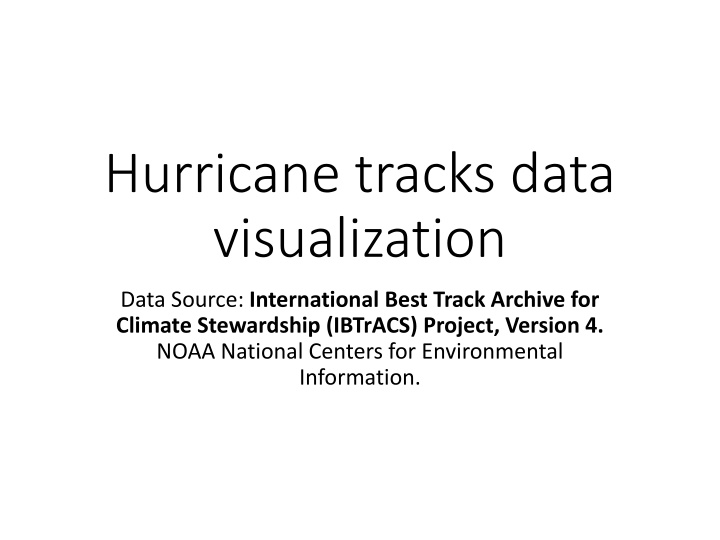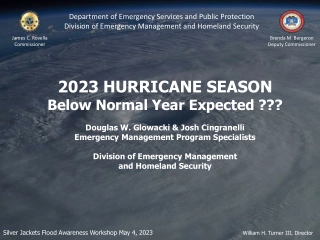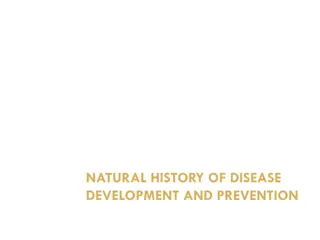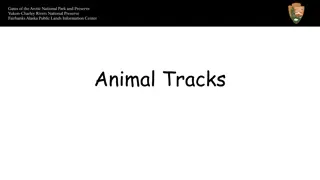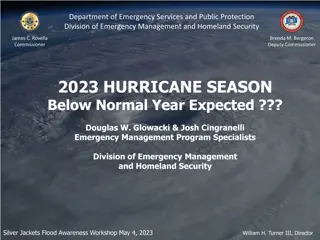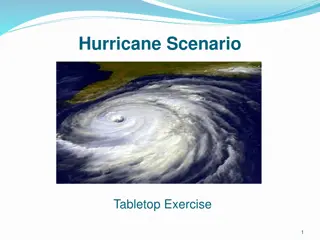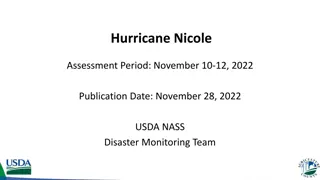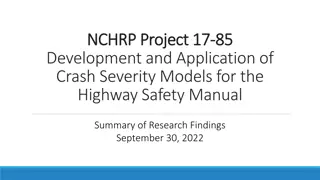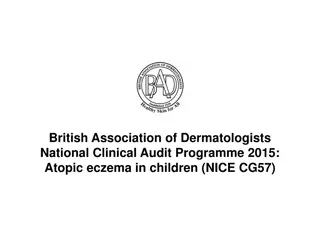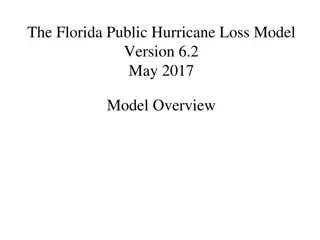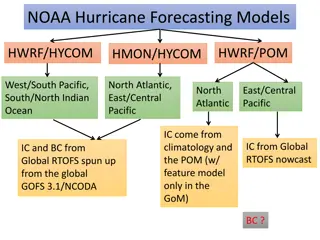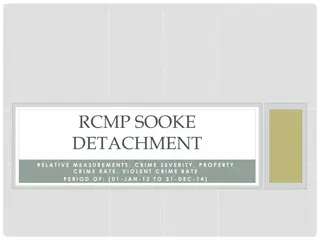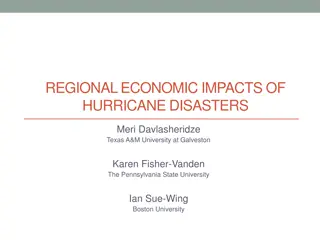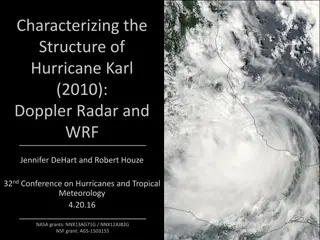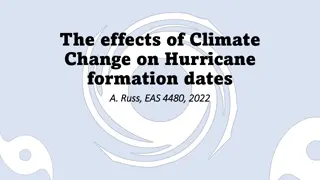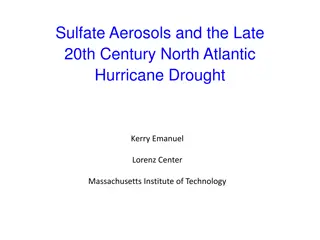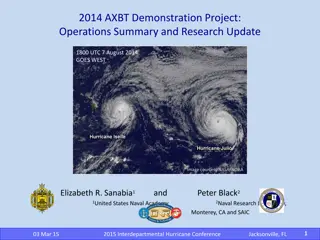Visualizing Hurricane Tracks and Severity Over 40 Years
Explore hurricane track data from 1981 to 2021 sourced from the International Best Track Archive for Climate Stewardship. The visualization includes maps showcasing hurricane frequency, maximum severity by Saffir-Simpson scale categories, and trend indices. Follow the evolution of hurricane patterns and severity levels over four decades across different regions.
Download Presentation

Please find below an Image/Link to download the presentation.
The content on the website is provided AS IS for your information and personal use only. It may not be sold, licensed, or shared on other websites without obtaining consent from the author.If you encounter any issues during the download, it is possible that the publisher has removed the file from their server.
You are allowed to download the files provided on this website for personal or commercial use, subject to the condition that they are used lawfully. All files are the property of their respective owners.
The content on the website is provided AS IS for your information and personal use only. It may not be sold, licensed, or shared on other websites without obtaining consent from the author.
E N D
Presentation Transcript
Hurricane tracks data visualization Data Source: International Best Track Archive for Climate Stewardship (IBTrACS) Project, Version 4. NOAA National Centers for Environmental Information.
Overview Hurricane track data were downloaded from the following website: https://www.ncdc.noaa.gov/ibtracs/index.php?name=i b-v4-access Product selected: IBTrACS.since1980.list.v04r00.lines (since 1980 - the modern era of satellite observations) Storm tracks were buffered by 50 miles buffer on each side To show coastlines in greater detail, only regional maps were created (Asia, Latin America and the Caribbean, and Africa-Middle East) (no global products)
Hurricane frequency (1981-2021) The first set of maps shows frequency (number of years) of exposure to hurricanes These maps were based on annual hurricane occurrence (all events from every individual year were aggregated into one annual raster, and the frequency was computed as a sum of annual rasters) Category of hurricanes (their severity) or a number of events in a single year were not considered for this product
Maximum hurricane category (1981 2021) The following maps show the maximum hurricane severity that the areas were exposed to Note that one hurricane track is often split into smaller line segments, and they can have different severity in different places Categories were based on the Saffir-Simpson scale: 0 = Tropical storm [34<W<64] 1 = Category 1 [64<=W<83] 2 = Category 2 [83<=W<96] 3 = Category 3 [96<=W<113] 4 = Category 4 [113<=W<137] 5 = Category 5 [W >= 137]
Trend index for hurricane frequency (1981 -2021) The following maps are based on a custom trend index (developed for conflict and drought data) Weighted scores were attributed for each year. The first half of the study period was attributed negative scores, and the second half of the study period was attributed positive scores (with the highest score for the most recent year). The range of annual scores was from -20 (for 1981) to 20 (for 2019) Trend index was computed as a sum of annual scores Possible range of values for hurricane frequency trend index is from -200 to 200
Severity-weighted frequency (1981 -2021) To find severity-weighted frequency, annual rasters were computed as a sum of all hurricanes (for example, if the same area got hit by a hurricane of category 1 and a hurricane of category 3 in a single year, it gets an annual score of 4 for that year) Frequency for full time series was computed as a sum of annual scores, and then reclassified to fit the range from 1 (low) to 6 (severe). As a result, both frequency and severity was considered for these maps
